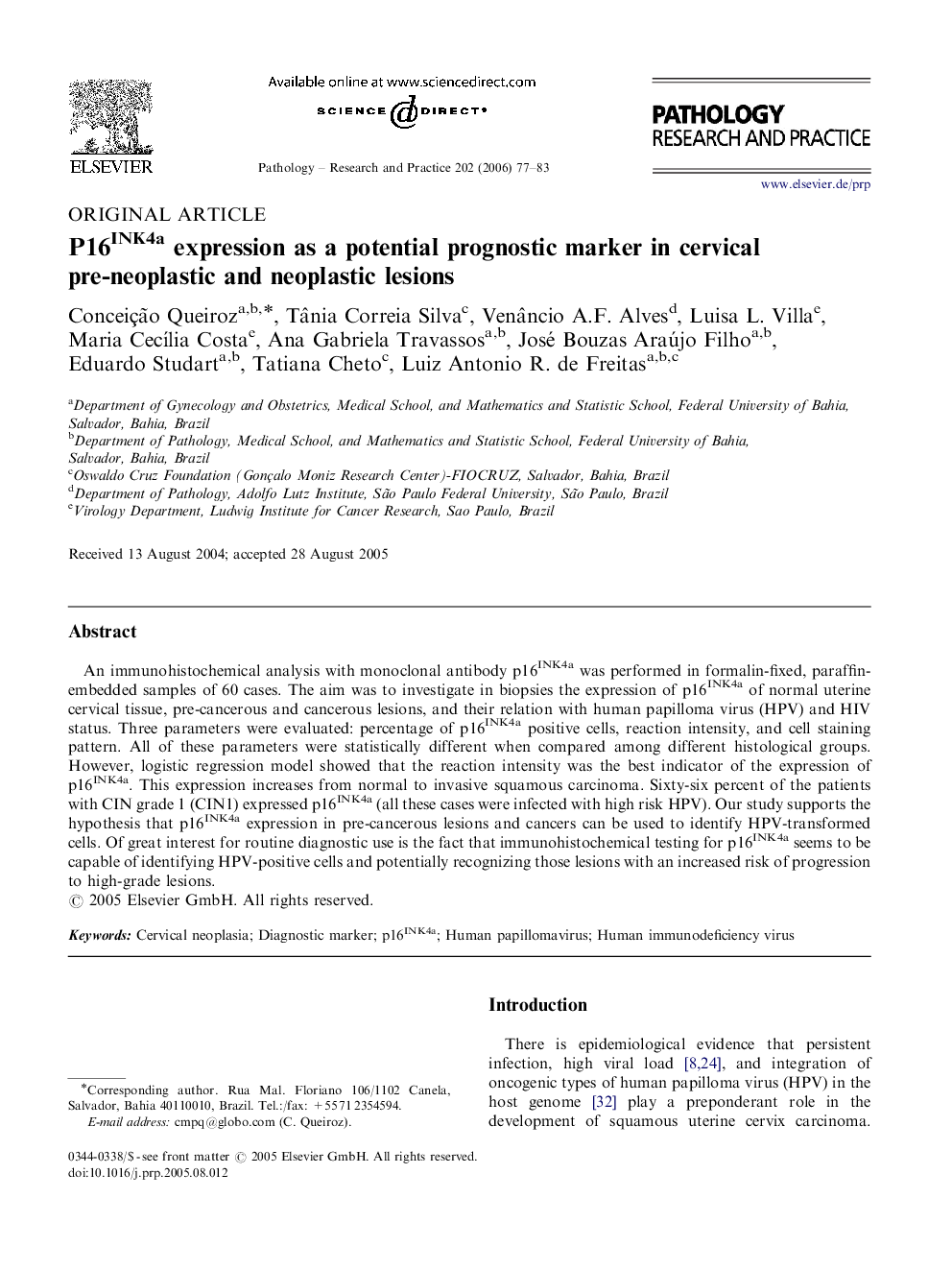| Article ID | Journal | Published Year | Pages | File Type |
|---|---|---|---|---|
| 2156771 | Pathology - Research and Practice | 2006 | 7 Pages |
Abstract
An immunohistochemical analysis with monoclonal antibody p16INK4a was performed in formalin-fixed, paraffin-embedded samples of 60 cases. The aim was to investigate in biopsies the expression of p16INK4a of normal uterine cervical tissue, pre-cancerous and cancerous lesions, and their relation with human papilloma virus (HPV) and HIV status. Three parameters were evaluated: percentage of p16INK4a positive cells, reaction intensity, and cell staining pattern. All of these parameters were statistically different when compared among different histological groups. However, logistic regression model showed that the reaction intensity was the best indicator of the expression of p16INK4a. This expression increases from normal to invasive squamous carcinoma. Sixty-six percent of the patients with CIN grade 1 (CIN1) expressed p16INK4a (all these cases were infected with high risk HPV). Our study supports the hypothesis that p16INK4a expression in pre-cancerous lesions and cancers can be used to identify HPV-transformed cells. Of great interest for routine diagnostic use is the fact that immunohistochemical testing for p16INK4a seems to be capable of identifying HPV-positive cells and potentially recognizing those lesions with an increased risk of progression to high-grade lesions.
Keywords
Related Topics
Life Sciences
Biochemistry, Genetics and Molecular Biology
Cancer Research
Authors
Conceição Queiroz, Tânia Correia Silva, Venâncio A.F. Alves, Luisa L. Villa, Maria CecÃlia Costa, Ana Gabriela Travassos, José Bouzas Araújo Filho, Eduardo Studart, Tatiana Cheto, Luiz Antonio R. de Freitas,
